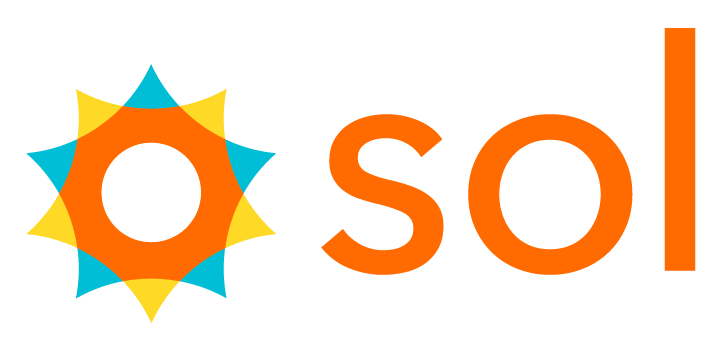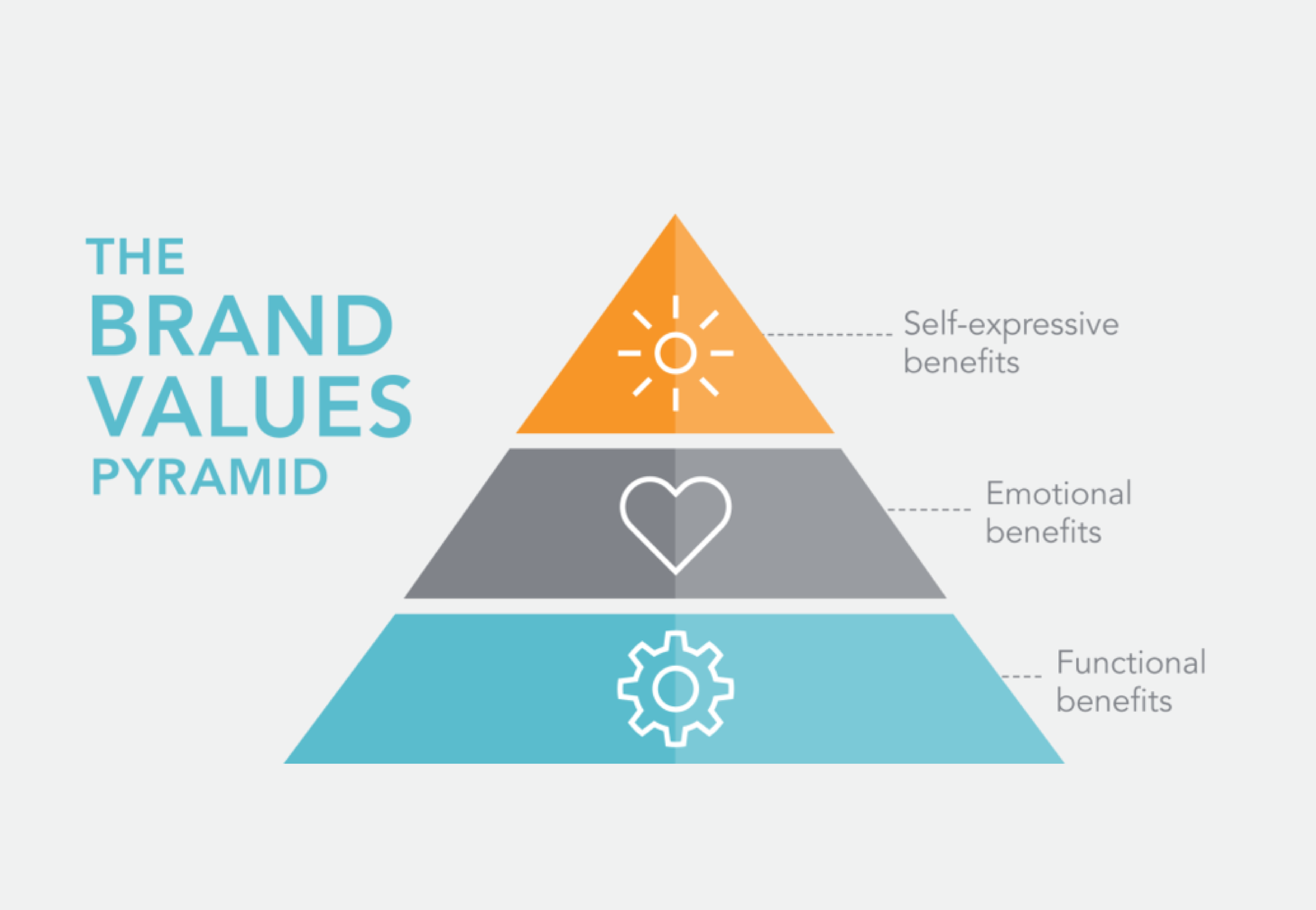I resolve to complete my brand values pyramid.
If you think back to Psychology 101 class in college, you probably remember studying Maslow’s hierarchy of needs. Maslow shaped his hierarchy like a pyramid, with the most basic human needs—food, water, shelter, air—at the base and loftier, more emotional needs at the top. The theory is that all humans must first solve for the lower levels of the pyramid before moving to the upper levels. Once a person is no longer worried about finding food and water, he or she can move up to solve the problem of safety. Once that person figures out safety, he or she can move up to love, and so on.
Just as Maslow’s hierarchy explains human motivation, the brand values pyramid illustrates the idea that when a person makes a decision to purchase or use a brand, they’re motivated to achieve certain needs. After fulfilling one need, a person seeks to fulfill the next one, and so on.
As customers move up the pyramid, brands must meet more of their customers’ emotional needs, and as those emotional needs are met by more and more companies, the best brands must support customers’ process of becoming self-actualized.
We’ll walk you through the steps to complete your brand values pyramid below.
1. Discover your brand’s baseline requirements.
In Maslow’s pyramid the basic requirements are food, water, shelter, air, and so on. You need to discover your brand’s baseline requirements. For example, let’s look at cars. The baseline requirements are wheels, an engine, and a steering wheel, as well as seats, mirrors, windows and the basic functional benefit of getting you from point A to point B.
All cars must meet these baseline requirements and deliver these functional benefits, or today’s market of car buyers will not take them seriously.
2. Identify your brand’s emotional requirements.
The next levels up in Maslow’s hierarchy are safety, belonging, affiliation and esteem needs. These are the benefits that make you feel like you’re part of a group and protected.
In the brand values pyramid, these middle tiers describe how certain features make the consumer feel. In car talk, these are the options. In branding, we refer to them as emotional benefits. Emotional benefits can provide a competitive advantage, but they are not your brand.
The options packaged in the middle of the pyramid for today’s cars are things such as Bluetooth, voice-activated navigation, heated seats, self-darkening mirrors, bi-xenon headlamps and a variety of other cool things.
Not every model of car in a category offers those features, so they’re still somewhat differentiating and can command a premium purchase price. However, these features are easy for other brands to imitate, so they don’t define the brand and certainly aren’t sustainable long-term brand differentiators.
Like the functional benefits we discussed before, emotional benefits alone will never be enough to create and sustain a brand. As today’s options become tomorrow’s standard equipment, these emotional benefits aren’t enough to differentiate your brand.
3. Uncover your brand’s self-expressive benefits.
Self-expressive benefits—the stuff at the top of the brand values pyramid—enable customers to complete the statement, “When I eat/drink/drive/wear/use this brand, I am___.”
This is where brands become transcendent, symbolizing their customers’ self-concept and giving consumers a vehicle to express themselves.
When brands provide self-expressive benefits to their users, they can engender deep emotional connections. For example, consider the difference between the self-expressive benefits associated with Heineken beer, which may heighten a person’s self-concept of being a sophisticated, discerning, worldly person, with those of Budweiser.
The most powerful brands are the ones that say something about their user. The key to successful branding is to make self-expressive benefits part of the brand value proposition to add richness and depth to the brand and the experience of owning and using the brand.

